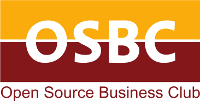VLC porting on Neuros Open Internet Television HDPlatform
In a joint effort, "Neuros Technology" and "M2X" will, as part of the "TI-Neuros Open Source Bounties", port VLC to the "next generation of Neuros OSD" solution. The "VLC" porting project was kicked off on May 28, 2008, with developers directly from VLC community. Jean-Paul Saman, one of the VLC maintainers, will be leading this porting effort.
Aiming to get an efficient and powerful multimedia framework on its Davinci Linux based Open Internet Television HD Platform, a highly optimized multimedia platform based on an ARM-DSP dual core system, Neuros has chosen to use VLC among many other alternatives due to its extensive multimedia functionality, openness, and portability.
The role of VLC in Neuros HDPlatform architecture is to be the playback and encoding engine for all multimedia contents. For codecs, VLC uses plugins to carry out its video decoding/encoding on DSP, while all audio operations are done on ARM side. For Audio/Video I/O, VLC interfaces with the system by directly working with its standard Linux A/V system, for example, frame buffer for video output and V4L2 for video capturing. On application side, VLC implements MPRIS specification and exposes a DBUS interface thus to cleanly separate the multimedia core from applications.
This porting will be based on VLC stable version 0.8.6g (in fact, porting starts with 0.8.6-bugfix, a branch that includes some bugfixes for 0.8.6g since it was released), porting will be carried out in phases, from basic multimedia platform bring up, to full playback and full recording support, with complete system integration done in Q3 of 2008.
As 'open' itself states, all VLC source code files, new or modified during the porting, will be submitted to the central source code repository of the VideoLAN team, under the same license GPLV2 as the rest of the VLC source code.


